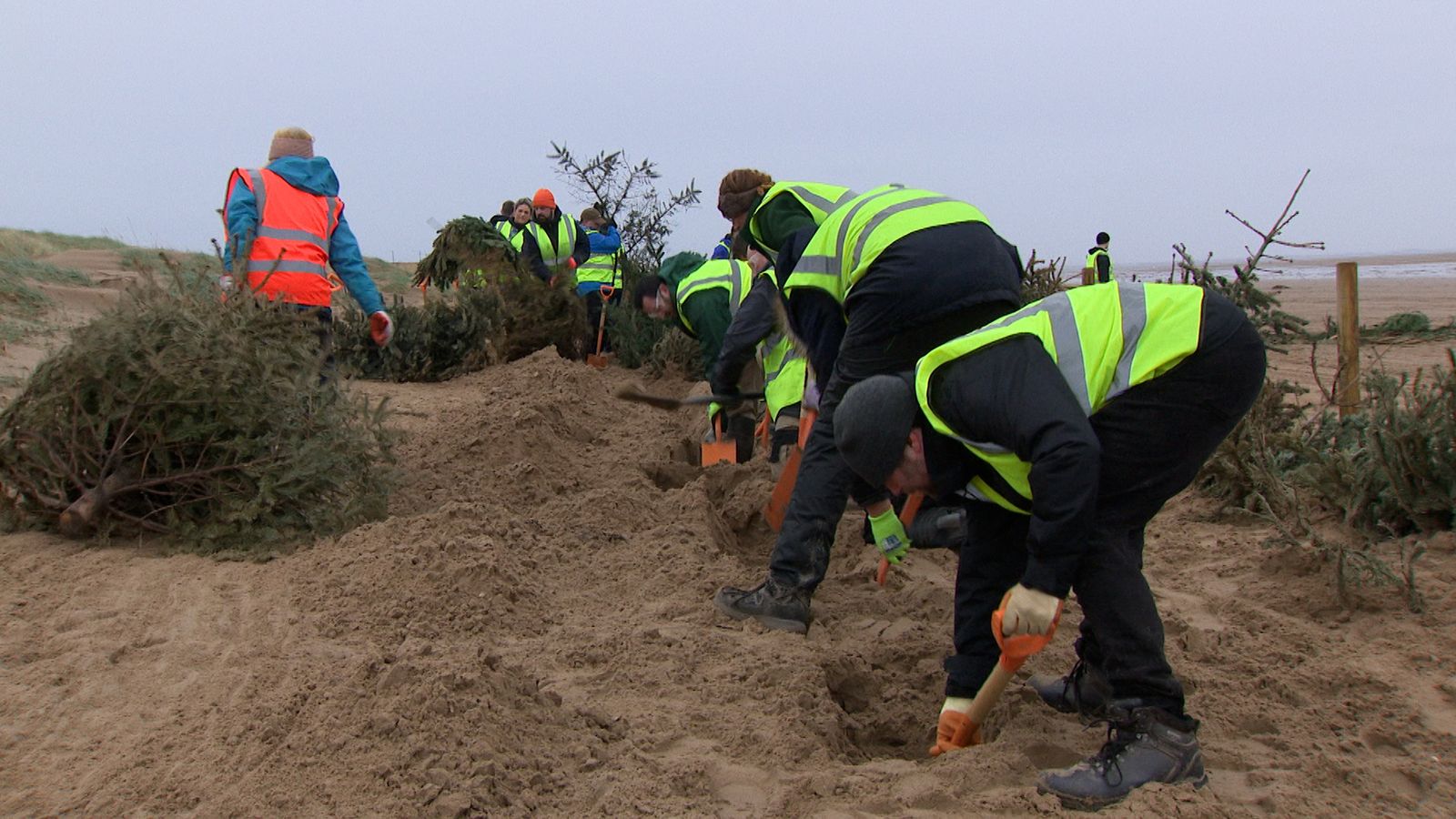Tens of thousands of Christmas trees are buried on a beach near Blackpool.
Some stick out of the sand in plain sight, others are buried underneath metres of sand dunes – exactly where they’re supposed to be.
Every February for two days, hundreds of locals descend on the beach wielding spades. They spend hours digging trenches in the sand and then fill them with old Christmas trees, buried up to their bottom branches. The next time the wind blows, the trees will catch grains of sand in their branches and begin to rebuild Lancashire‘s last remaining dunes.
It takes six months to a year to build new dunes with this method, a process that can take hundreds of years in nature. The annual Christmas tree burial has completely changed the landscape along the beach – what was once flat is now hilly, covered in grasses and home to around 500 sand lizards.
Paul Whitehead works at Blackpool Zoo and has been digging these trenches every year for the last decade. He looks over to the dunes that are now so tall they obscure the town behind.
“Some of these dunes that have been created in the past 10 years, I might have helped to build them.”
He quickly stops chatting so he can get on building the trench, which is appearing at an impressive rate. This year, around 150 volunteers have planted more than 4,000 donated trees in just two days.
Toddler and man killed in crash in Tarleton, Lancashire
Lancashire ballet dancer dies after eating mislabelled cookie in US
Lancashire accent may vanish ‘in a few generations’, study suggests
Sand dunes help to protect us from the sea. As well as acting like a windbreak for anything behind them, they can also reduce the power of waves hitting the shore during big storms.
As sand is swept off the dunes and into the sea, it can form sand bars in the water, which make waves break offshore instead of the beach. And then, once the storm has passed, the dunes can rebuild themselves using the sand that was swept out, ready to protect us again next time.
Click to subscribe to ClimateCast wherever you get your podcasts
But this natural sea defence is disappearing. Development, coastal erosion and people using the sand in industry have all forced the dunes into retreat. Fylde Council now bears the responsibility of having Lancashire’s only remaining sand dunes, and ranger Andy Singleton Mills looks after them. He says the sand dunes are crucial for Fylde.
“They’re a brilliant soft sea defence, they protect all the houses of St Annes and Lytham further down the coast. And they’re also a rich cultural feature – they’ve been here for hundreds of years and they protect so much wildlife.”
Be the first to get Breaking News
Install the Sky News app for free
The Lancashire Wildlife Trust runs the project with the council and the Environment Agency. Although they’re not the first to try using Christmas trees to build sand dunes, this is now the longest-running project like it in the UK. The impact it has had is impressive – in one decade, they’ve built 90 metres of dunes down the beach.
“Before we took over as a project about 10 years ago, there was no sand dunes here at all, so you’d be able to see right the way through to the road,” says Amy Pennington, who runs the project for the Wildlife Trust.
“We’ve put in lots of rows of Christmas trees that are now buried and will have all decomposed – they’re now part of the sand dune system. It’s 90 metres of improved coastal defence, but also 90 metres of improved habitat for the wildlife that lives here too.”






